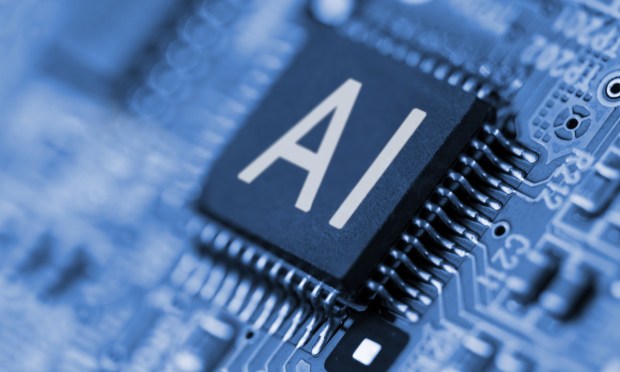
When it comes to using artificial intelligence (AI) systems, many firms are fishing with dynamite.
That’s because the biggest and most impressive large language models (LLMs), including OpenAI’s GPT-4, are trained on over 1 trillion parameters, and cost hundreds of thousands of dollars a day to run.
Using such models for daily tasks with minimal impact or low complexity, or for small-scale personal queries, is, well, a bit overkill. After all, asking a chatbot to write something like a Valentine’s Day sonnet doesn’t necessarily require the computational intensity — much less justify the computational cost — of today’s most advanced AI algorithms.
And while Big Tech’s big AI models have served their purpose of both popularizing and familiarizing the disruptive technology across a broad global audience, the future of AI’s commercial applications likely lies in smaller models that have fewer parameters but perform well on specialized tasks.
Despite the tech sector’s well-publicized push for increasingly gargantuan AI systems that could, supposedly, one day reach superhuman sentience, creating smaller models that can do one thing very well — rather than one model that can do everything — represents a more cost-effective and scalable future for both the AI ecosystem and the enterprise landscape.
This, as a group of NYU researchers taught an AI system to recognize objects using just 250,00 words and corresponding images. Their paper, published Thursday (Feb. 1), claimed that the smaller neural network was successful 62% of the time — with results comparable to a similar, if much larger, AI model that was trained on 400 million image-text pairs.
The research could lead to smaller, more efficient and more deployable AI models.
Read also: Who Will Power the GenAI Operating System?
The generative AI boom was jumpstarted by OpenAI’s ChatGPT product, which encapsulated the ethos of “more parameters = better models,” but even Sam Altman, OpenAI’s CEO, has said that new ideas, not bigger models, will evolve AI.
And for AI to be truly democratized, its future might just be built atop smaller, more cost-efficient systems.
After all, smaller AI models are exactly what OpenAI is hoping to commercialize with its recently launched GPT store, and the AI pioneer is far from alone in this respect.
Both Google and Apple are developing on-device AI solutions for their respective mobile products, with Google’s Gemini Nano AI model powering next generation applications across its Pixel phones, and Apple integrating smaller, use-case specific on-device AI models into its iPhone.
As revealed in the PYMNTS Intelligence report “Consumer Interest in Artificial Intelligence,” consumers interact with about five AI-enabled technologies every week on average, including browsing the web, using navigation apps and reviewing online product recommendations. Additionally, nearly two-thirds of Americans want an AI copilot to help them do things like book travel.
These narrow applications of AI don’t call for an AI system with intelligence greater than a human, just one that can do the task that is asked of it — and that’s something that smaller AI models are more than capable of.
As just one example, on Thursday Google Maps said it began the rollout of a new generative AI-powered feature that will help people discover places based on their specific needs.
“AI is a tool, and like any other tool, the potential of the tool lies in the way you use it,” Akli Adjaoute, founder and general partner at venture capital fund Exponion and author of the book, “AI Reality and Illusion” which is set to be published April 30, told PYMNTS in November.
See also: Tailoring AI Solutions by Industry Key to Scalability
Big Tech’s big AI models come with an equally big price tag, relegating development to some of the world’ most valuable companies only.
But by deploying a wider range and number of AI models fine-tuned for specific tasks or subject areas the AI landscape can be both democratized and commercialized, something increasingly important as the business world shifts from encountering AI for the first time to integrating it into workflows.
“In 2024, we’re going to shift from a world where it was a risk to try using generative AI to become more efficient, into a world where there is actually a bigger risk of being left behind if you don’t try it,” James Clough, chief technology officer and co-founder of Robin AI, told PYMNTS during a conversation for the “AI Effect” series.
Small AI systems are often better suited than large ones in specific scenarios where efficiency, simplicity or resource constraints play a significant role.
Internet of Things (IoT) devices, which may include sensors, wearables or smart home devices, benefit from small AI systems that can run on low-powered hardware, and across scenarios where real-time processing is essential, such as video analysis, live-streaming applications and even payments, small AI systems can provide quicker responses due to reduced computational overhead.
Additionally, tailoring an AI model to a particular use case can lead to better performance and cost-effectiveness. And in situations where there is limited training data available, small AI models, such as those based on transfer learning, can still deliver meaningful results.
Separately, smaller enterprises with budget constraints may find small AI systems more accessible and cost-effective for addressing specific business needs.